Installation of a gas boiler in an apartment building: what does the law say?
Central heating does not always suit apartment owners and many dream of autonomous. But not everyone knows that installing a gas boiler in an apartment building is not just a dream, but a very real possibility.
Hard to believe or not to believe at all? Then we will tell you everything in detail and explain how to carry out independent heating in your apartment, what documents are needed for this, how to prepare the room and in what cases it is impossible to gasify the apartment.
The content of the article:
Normative acts, laws and regulations
Immediately consider what decrees at the legislative level regulate such connections. They will help you to implement your plan without problems with local authorities, without danger to health and life, and in addition, with a minimum waste of time and money.
You will need to familiarize yourself with:
- SP 60.13330.2016 - “Heating, ventilation and air conditioning”.
- SP 62.13330.2011 /SNiP 42-01-2002 - Here is a detailed discussion of gas distribution systems.
- SP 41-108-2004 - a document on apartment heating by gasification.
- SP 402.1325800.2018 - "Rules for the design of gas consumption systems."
And of course, general research is needed on the documentation of your apartment building.
Storeys and other requirements for gasification
So, you have been patient and you have the financial ability to equip autonomous heating in your apartment.
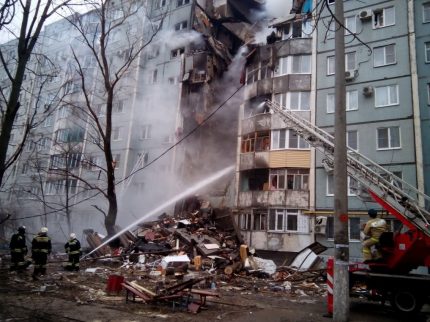
First of all, you should clarify on which floor you live. Previously, there were restrictions on gasification from 5 to 9 floors in various legislative acts. Now we can safely take the joint venture 402.1325800.2018 for consideration and in it we see in paragraph 5.18 the requirements for apartment-by-apartment heat supply in residential buildings up to 28 meters high.
If you want to argue with this act, you can try, but in any case, you will need to agree on safety standards with the Ministry of Emergencies and other units, the positive outcome of which is doubtful.
The Technical Regulation for the Safety of Gas Equipment states that the supply of "blue fuel" is possible only if fire safety is provided, which includes the possibility of a quick technical response to ignitions. And although this document was canceled, the requirements in it are quite reasonable.
Indeed, the technical possibility of quick fire fighting on floors above 10 is not possible in every city. Not even every roof is equipped with a helipad, not to mention the fact that gasification is unprofitable to provide for in high-rise buildings under construction for various reasons.
But this is generally a separate conversation, the main thing we found out is that the number of storeys of your house should not exceed 28 meters.
Facilities for gas-powered equipment
Now let's talk about the room itself and the requirements for it. This is necessary in order to, again, avoid unnecessary actions, because if your room does not correspond, it makes no sense to issue gasification.
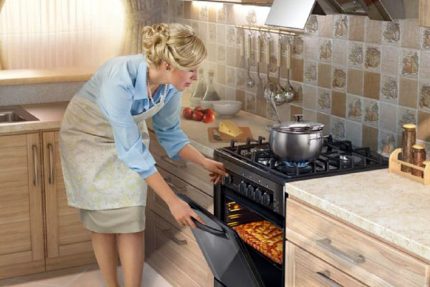
Rummaging through a pile of papers is not required, just look at Rules for the design of gas supply systems SP 402.1325800.2018. These are the latest gas supply design rules by release date, which, although included in the list of voluntary use, but comply with all the requirements of the Technical Regulation for Building Safety.
In order not to bother yourself, you still have time to study SP 402.1325800.2018 in detail, just look at part 5 “Requirements for premises ...” and find the section “Apartment buildings”. In the first paragraph (paragraph 5.16) we see that the installation of gas stoves in niche kitchens is strictly prohibited.
Kitchen Niche - as defined by SP 54.13330.2011 - this is a room or part of it in which there is no dining area used for cooking. Of the equipment in it - an electric stove and supply and exhaust ventilation. In a broader sense - a kitchen area in one way or another communicating with the premises of another purpose.
Let us return to the rest of the requirements, they are the same as in single-family houses, so we look at paragraph 5.1 and see that, again, gas stoves should be in the kitchen premises (in 5.16 they are exactly), with a height of 2.2 m or more, with volumes from 8, 12, 15 cubic meters for 2, 3, 4-burners, respectively.
Should be provided ventilation hood, a window with a window for ventilation and a gap in the lower part of the door from 0.02 cubic meters. square meters. For boilers, the requirements are the same and do not forget that individual heat generators should have an area of 15 cubic meters.
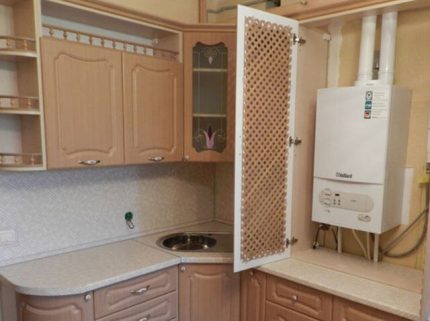
For reference, heat-generating - premises with the purpose of non-residential type, in which it is planned or already placed equipment with the supply of thermal energy and auxiliary devices to it. This applies to gas-using devices - stoves, columns, boilers.
Let's continue about boilers. So, gas boiler in the apartment instead of the existing central heating, with a capacity of up to 50 kW put in the kitchen room, a corridor passage, in a non-residential room (except those that have high humidity - these are saunas, bathrooms, a bathroom).
If the power of the device in combination with others is higher, but does not exceed 100 kW, then a separate boiler room will be required. Please note that again - no residential premises in the apartments should be higher or lower.
Standards for distances and designs
We talked about the placement of the boiler room, the height from floor to ceiling, now we will discuss the room itself, where you can install a gas boiler in the apartment, what distances to gas-using equipment must be observed and what kind of structure should still be in the room.
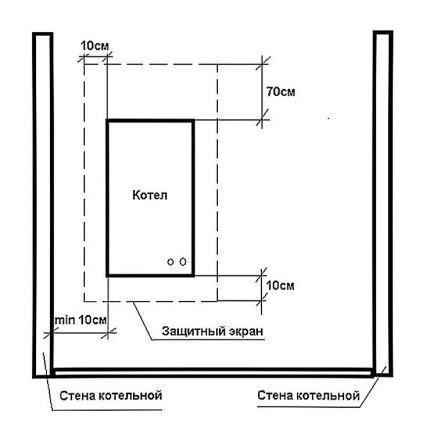
However, there are mandatory rules. For example:
- Columns and boilers with a wall type of fastening should be installed on surfaces with fireproof material or fenced with special tempered glass and a distance from the walls of at least 3 cm.
- Wood floors or wood-finished floors are not allowed to install gas-powered equipment if they are not covered with insulation up to 10 cm of the protrusion for the installed equipment with fire-resistant material.
- The horizontal distance from the stove to the heating equipment is taken from 10 cm.
However, equipping heating devices according to these requirements will not be so difficult. It is much more difficult to think of a hood and a window.
Exhaust ducts and window structures
To begin with, if you plan to place any equipment related to gas, ventilation should be of a natural type.
The hood is equipped with the calculation of three-fold air exchange with the same inflow and additional air supplied to support combustion. Air supply for the boiler is carried out in a separate channel.

As for the window, it should be an easy-to-reset design. Volume - 0.03 square meters. meters per 1 cubic meter room volume meter. And the door leading from the room should open outward.
Well and, of course, do not forget about the installation of IPU.
Separately, there are still mandatory recommendations on smoke channels and ventilation, which you will find all in the same SP 402.1325800.2018.
The nuances of gasification of an apartment building
Process gasification of apartment buildings can be autonomous or centralized.
In the first embodiment, fuel is taken from the general pipeline pipeline, and in the second, the supply is from special tanks that dispense and store a gas resource, called gas holders.
Installation of gas holders is unlikely in densely populated neighborhoods with apartment buildings, since the following conditions must be met during their implementation:
- Possibility of passage of vehicles for tank maintenance.
- The distance from any residential facilities is at least 10 meters, from fences - at least 2 meters, from other buildings - from 5 meters.
- From reservoirs, wells and other wells - 15 meters.
With centralized gasification, all requirements have already been met.
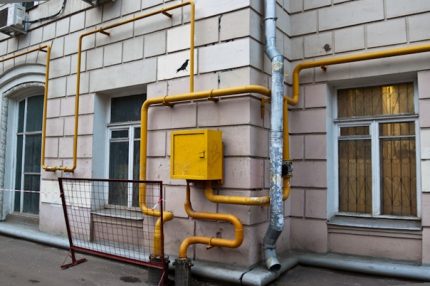
Of course, there are many more nuances according to the peculiarities of the location of the house, its structural structure and so on. These data will help you clarify with your local government.
Gas for new buildings
When arranging gas supply in a new building, whatever it may be, if gasification is not initially provided, it is necessary to hold a meeting of tenants who have rights to residential premises in a particular house. At the meeting, a protocol is drawn up showing the number of people present, the topic of the meeting, the decision and the voting results.
If not everyone agrees, but at the same time “For” the majority of votes of residents, the decision is made in favor of the majority. Then you need to visit the administration, learn about the possibility of gasification, according to the planning scheme.
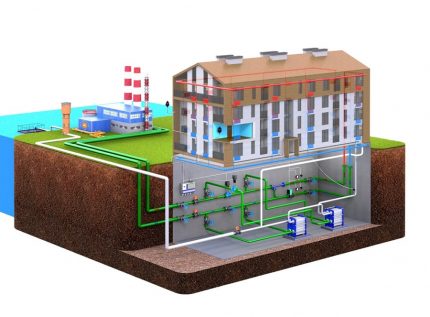
Further, the chairman of the meeting relates the protocol to the housing and communal services together with a statement on the connection of gas. The question is referred to the designer or a separate specialized organization.
A project is drawn up and then gasification of the house occurs if there is such a technical possibility. For autonomous gasification of individual apartments, the scheme is slightly different.
The procedure for registration of gasification of the apartment
First of all, it would not be out of place to find out whether it is possible to gasify residential facilities in your apartment building or not. This can be done in the local Criminal Code and GRO.

A preliminary conversation is needed in order not to waste time in collecting documentation and going to authorities, if it is still unrealistic to carry it out.
After receiving approval, you will need to collect residents and get a positive decision from them with the minutes of the meeting.
Let's look at the Housing Code of the Russian Federation. It has all the points relating to the nuances of the reconstruction of residential premises, starting from article 25. Gasification is a reorganization, as it relates to utilities, the change of which requires the inclusion of a living room in the data sheet.
Work is being carried out, according to the law, at the expense of the owners of residential premises. That is, from a gas inlet to an in-house gas equipment, if your region does not provide any preferential program, you completely pay for all communications and work. As well as design, construction and commissioning, commissioning, re-equipment of existing heating networks.
Next, you need to go to the local government and write an application for reorganization, as well as agree on the gasification of the apartment with the Criminal Code.
After that, it is necessary to apply for a technical specification in the local GRO serving the highways in your area. Do not forget to get the consent of the owner of the pipeline.
On a contractual basis, you should entrust the organization with a license for this type of work, inspection of the chimney and ventilation systems, as well as their arrangement or reconstruction.
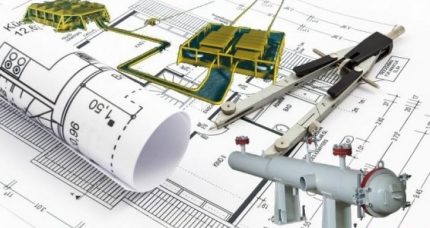
The development of the project and estimated work is carried out, after which it is necessary to write a statement on disconnection from the general heating and hot water supply to the local heating network.
The acquisition of gas utilization equipment is a very important and crucial moment. You can’t just take and buy the first cooker or boiler you find in the color of a handbag. Devices must comply with the requirements of the joint venture and GOST.
After all this is ready, the specialists bring in the pipes of the gas pipeline and install in-house gas-using equipment according to the approved project.
The next step is to install metering devices, as well as signaling devices, according to SP 402.1325800.2018. When everything is established, a series of agreements are concluded between the gas supplying organization and the applicant for the maintenance of gas-using equipment and for the supply of gas.
There is admission to operation and trial start-up of gas, as well as safety training with the owner.
Here, perhaps, all the steps that must be passed on the path to gasification of the apartment.
Bans for owners of gasified apartments
Having got autonomous heating at your disposal, you should not think that now you can use gas as you like. There are certain restrictions and prohibitions.
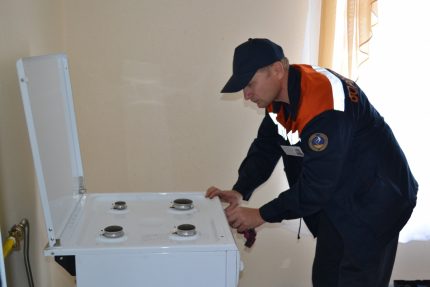
For example, it is strictly forbidden to carry out unauthorized gasification. What applies here is the outlet of gas pipes to local gazebos, garages, sheds, cellars and so on. Connecting equipment not registered in the GRO, even if you just want to change one device for another. To do this, you need to invite specialists.
You can not redevelop the room into which the gas is supplied without prior approval. It happens that after the devices are installed, people begin to remove temporary partitions.
Do not think that such a trick will be ignored. With the nearest maintenance, your ingenious design can be wrapped. JVs and SNiPs that regulate the installation of gas boilers in an apartment, no one cancels after installation of devices.
It often happens that users turn off automation and signaling devices if it triggers a hardware malfunction. To do this is by no means recommended, remember that you are risking not only your property, and most importantly your life, but also other people, since you live in an apartment building.
Another reasonable requirement is that you cannot leave appliances that are not designed for long burning unattended for the duration of their absence. Speech, of course, about gas stoves and included flowing water heaterseven if they are equipped with emergency shutdown automation. Still, we are talking about explosive and flammable gas fuels.
To use gas for other purposes (household appliances) is not worth it. And it’s forbidden to sleep in boiler rooms, after all, it’s not without reason that these rooms should be of non-residential type.
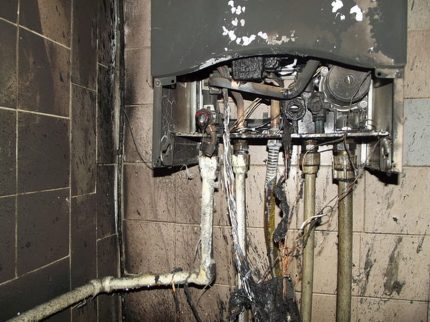
In general, each owner of the gas distribution company should be instructed regarding their rights and obligations before transferring the gas pipeline to operation.
Obligations of the owner of a gasified apartment
If you have become a happy owner of autonomous heating of an apartment, remember that you have not only bans, but also obligations. You must comply with the rules for using gas in your home.
Among them:
- the need to carefully study the briefing on the use of gas powered appliances;
- carefully monitor the optimal functionality of all devices, chimneys and ventilation ducts;
- carefully monitor that the draft is at the proper level and periodically clean the chimney duct;
- immediately report to the GRO on all malfunctions arising from the controlled equipment, in particular about possible leaks outside the apartment on the gas supply;
- in the event of a sudden disappearance of the gas supply, close all valves on the burners and supply pipes, call 04 to clarify the reasons;
- at any time of the day, allow GRO employees to inspect equipment at a signal to their office about a possible emergency;
- allow specialists for maintenance and inspections;
- timely pay for the resources received according to the testimony of the IPU;
- Keep children away from working gas appliances.
Among other things, when leaving for more than a month, it is necessary to notify the gas service and leave them your current phone number for communication in case of malfunctions on the line.
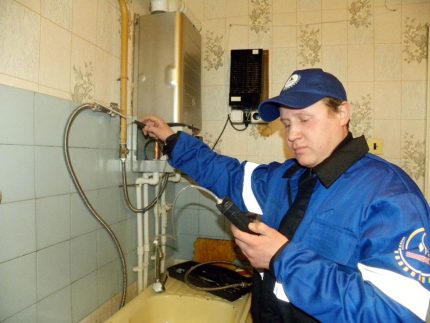
Not so difficult requirements, to comply with their work will not be, and even ensure your safety.
Conclusions and useful video on the topic
What to do when a gas leak in the apartment:
Thus, the question - is it possible to put a gas boiler and related equipment in the apartment, can be answered positively. But for this you need to have the appropriate technical conditions, the necessary documentation, be patient and go through all these stages.
Many apartments in Russia have autonomous heating, therefore, you also have a chance to get such an opportunity.
Have you gasified your apartment? Maybe you are planning or are categorically against such actions within the MKD? Write your opinion in the comments, as well as ask your questions.

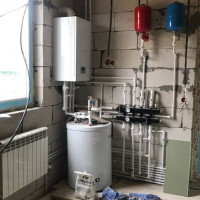 Requirements for the premises for installing a gas boiler: norms and rules for the arrangement
Requirements for the premises for installing a gas boiler: norms and rules for the arrangement 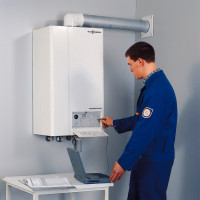 How to calculate the power of a gas heating boiler: formulas and calculation example
How to calculate the power of a gas heating boiler: formulas and calculation example 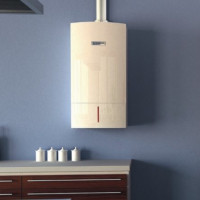 Gas heating in an apartment: how to make an individual circuit in an apartment building
Gas heating in an apartment: how to make an individual circuit in an apartment building 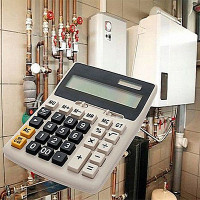 Which is cheaper: gas or electricity? Arguments for choosing a practical option for a private house
Which is cheaper: gas or electricity? Arguments for choosing a practical option for a private house 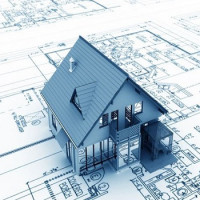 Typical schemes and rules for designing a heating system for a one-story private house
Typical schemes and rules for designing a heating system for a one-story private house 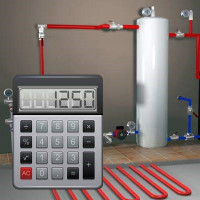 The average gas consumption for heating a house is 150 m²: an example of calculations and an overview of thermal formulas
The average gas consumption for heating a house is 150 m²: an example of calculations and an overview of thermal formulas  How much does it cost to connect gas to a private house: the price of organizing gas supply
How much does it cost to connect gas to a private house: the price of organizing gas supply  The best washing machines with dryer: model rating and customer tips
The best washing machines with dryer: model rating and customer tips  What is the color temperature of light and the nuances of choosing the temperature of the lamps to suit your needs
What is the color temperature of light and the nuances of choosing the temperature of the lamps to suit your needs  Replacement of a geyser in an apartment: replacement paperwork + basic norms and requirements
Replacement of a geyser in an apartment: replacement paperwork + basic norms and requirements